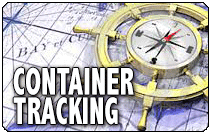Packing Tips for a Smooth Move
 Many of you will be packing up your belongings and moving into new homes, in a new country this year. Your families are taking with them household items that are very valuable, fragile, and breakable. With such valuable items at stake, proper packing techniques become an essential part of your move. If you are one of these families, and are planning on packing your household items yourself, here are some proper packing techniques that will ensure your move is a smooth one.Plan on giving yourself at least six weeks to pack and get ready for your move. The more time you allow yourself, the easier packing will be. Before you start packing your items, determine which items you want to keep, throw away, or sell. Moving is an excellent time to get rid of items that you no longer want or need to keep. Not only will this save you time and money, but you’ll have fewer items to pack. Don’t start packing just yet – plan how you will pack, and which items you will pack together. Pack items that you don’t use often first. Also, try to pack items that are the same size and weight together. Don’t pack so many items into one carton that it’s not easily lifted.
Many of you will be packing up your belongings and moving into new homes, in a new country this year. Your families are taking with them household items that are very valuable, fragile, and breakable. With such valuable items at stake, proper packing techniques become an essential part of your move. If you are one of these families, and are planning on packing your household items yourself, here are some proper packing techniques that will ensure your move is a smooth one.Plan on giving yourself at least six weeks to pack and get ready for your move. The more time you allow yourself, the easier packing will be. Before you start packing your items, determine which items you want to keep, throw away, or sell. Moving is an excellent time to get rid of items that you no longer want or need to keep. Not only will this save you time and money, but you’ll have fewer items to pack. Don’t start packing just yet – plan how you will pack, and which items you will pack together. Pack items that you don’t use often first. Also, try to pack items that are the same size and weight together. Don’t pack so many items into one carton that it’s not easily lifted.
Make sure to use proper packing material. We suggest professional packing tape, which is wide, clear or brown, and very durable. Masking tape is not recommended because it’s not very strong, and cannot support the weight of a fully packed carton. Label the contents on the outside of all boxes, along with the room they belong to in your new home. If the items are fragile, make sure to write that on the box, along with arrows indicating the upright position.
Garage/Hobby Room/Storage
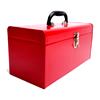 Garages and storage sheds typically take the longest to prepare for moving, as they are filled with odd-shaped, sharp or heavy items that require special care to pack correctly.Professional movers recommend starting by safely disposing of items that cannot be shipped, like pesticides, fertilizers, oil and gas. Next, group items of a similar size or shape together, like long-handled tools with pruning shears. Then, make sure you have an assortment of moving boxes and unprinted newsprint to properly wrap and cushion items.
Garages and storage sheds typically take the longest to prepare for moving, as they are filled with odd-shaped, sharp or heavy items that require special care to pack correctly.Professional movers recommend starting by safely disposing of items that cannot be shipped, like pesticides, fertilizers, oil and gas. Next, group items of a similar size or shape together, like long-handled tools with pruning shears. Then, make sure you have an assortment of moving boxes and unprinted newsprint to properly wrap and cushion items.
Tools
Long-handled garden tools, as well as brooms and mops, should be bundled together securely for moving. Attachments should be removed from power tools and packed separately. Hand tools may be left in toolboxes. Fill spaces with crushed paper, or pack according to general packing rules. Always use small cartons for heavy tools. Use old towels to wrap and tape any sharp-edged tools. Don’t Forget – Power tools must be completely drained of oil and gas before moving.
Rakes & Brooms
Shovels, rakes, brooms and the like need not be packed; gather them together for your mover to bundle in a pad.
Lawn & Patio Furniture
Remove cushions and clean frames. Pack pads in a large moving carton or wardrobe box.
Umbrella
Keep umbrellas clean and dry during moving by wrapping them in paper padding or a plastic bag and taping shut. Do not pack the weighted umbrella stand.
Grill
Dispose of any unused charcoal. Remove tank — it cannot be transported.
Outdoor Equipment
Before moving day, dismantle TV antennas, garden sheds, and swing sets that you plan to take with you. Place small hardware in a plastic bag or old coffee can and label. If possible, securely attach the parts bag to corresponding equipment. Prepare lawn mower by safely draining gasoline prior to moving day.
Pots and Planters
Pack small ceramic or pottery planters for moving like any fragile item: individually wrapped with plenty of cushioning. If you plan to move any large or unusual planters, consult your moving professional.
*Tip
You’ll need to re-pack boxes that are torn or falling apart, or that cannot be sealed. This is often the case with items found in attics and crawl spaces, like seasonal decorations and toys.
Trash Cans It may be easier just to buy new garbage cans at your destination. Clean cans if you plan to take them with you.
Vehicles
Consult with your Relocation Director on the following items: riding mower, gas-powered leaf blower, snow blower, motor scooter, moped, trampoline, above-ground swimming pool, hot tub, satellite dish, storage shed, swing set, jungle gym, dog house or kennel If you’re not sure about any item, be sure and ask.
Home Office/Den
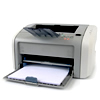 Electronics Care
Electronics Care
Special preparation is required for large screen televisions and other electronics:If the original carton and packing materials are no longer available, you may need to crate it prior to moving day. If the item can fit in another sturdy carton, line it with plenty of newsprint paper or styrofoam before packing. Seal securely and mark “Extremely Fragile” on the carton. When packing a personal computer, printer, scanner, or other equipment: Detach all connecting wires, removable paper feeders/holders from all hardware and wrap monitors Remove all ink and toner cartridges Label all cables and wires for easy re-assembly. Back up all computer files Pack speakers in well-cushioned dish pack boxes. Consult your user manuals for any additional instructions or file storage recommendations.
Move Tip
Label cords and cables so you’ll know which goes where, and pack them in the same box as the electronic equipment they go with.
Books
Pack books of the same general size together, in small book cartons. Pack them either flat, or with the spine touching the bottom of the carton. Do not pack with spine facing upward, as glue can break away from the binder. Expensively bound volumes or those of sentimental value should be individually wrapped before packing.
Office Furniture
Any modular office furniture will need to be dismantled prior to move day. Use tape to mark where pieces go together and keep the hardware together (including drawer pulls) in one spot, like a plastic bag or coffee can.
*Tip
If you’re applying for a mortgage, gather together your financial paperwork before you move: W2s, pay stubs, previous tax returns, etc.
Bedroom/Nursery/Bathroom
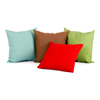 Start packing your bedrooms for moving by tackling less-used guest rooms first. Children can help by setting aside the toys and books they want to take with them and packing the rest in boxes. Colorful stickers on the outside of moving boxes let children know their personal belongings are clearly marked, and allow them to identify their things when the overseas container is unloaded.
Start packing your bedrooms for moving by tackling less-used guest rooms first. Children can help by setting aside the toys and books they want to take with them and packing the rest in boxes. Colorful stickers on the outside of moving boxes let children know their personal belongings are clearly marked, and allow them to identify their things when the overseas container is unloaded.
Clothing
Clothing hanging in closets can sometimes be left on hangers and placed in wardrobe cartons if your goods are being loaded into an overseas metal container. One will hold about two feet of compressed clothing on hangers; figure more cartons if wrinkles are a concern. If wardrobe cartons are not used, each garment should be removed from its hanger, folded, and placed in a suitcase or a carton lined with clean paper.
Hats
Hats may be left in hatboxes and placed in large cartons for moving; or stuff the crown of each hat with crumpled tissue paper, wrap tissue loosely around the outside and place in a carton lined with clean paper, with the heavier hats at the bottom. Don’t pack anything else with hats. Label the moving carton “FRAGILE.”
Jewelry
Valuables such as fine jewelry should be removed from drawers and never packed with your household goods. They will be most secure if they remain in your possession while moving.
Toiletries
Dispose of aerosol spray cans, such as hairspray or deodorant. Other bottles should be carefully taped shut and wrapped to prevent leakage while moving, then packed in small cartons.
Bedding, Linens, and Towels
Blankets, sheets, tablecloths, towels, pillowcases and other linens may be protected by a large plastic bag and packed in a moving carton that has been lined with clean paper. Linens and bedding are good for cushioning or padding other items. If you decide to wash your linens before you pack them, make sure they are thoroughly dried prior to moving.
Mattresses & Pillows
Mattresses should be placed in mattress moving cartons for added strength and cleanliness. Pillows may be placed in bureau drawers or packed in cartons. They also make good padding for other items.
Mirrors
Glass mirrors should be packed in special mirror cartons for moving. However, if they are especially heavy, crating is recommended.
Draperies & Curtains
Wardrobe cartons are ideal for moving curtains and drapes. Fold them lengthwise, place over a padded hanger, pin securely, and hang in the wardrobe. Draperies and curtains also may be folded and packed in cartons lined with clean paper or plastic wrap.
Rugs
Leave area rugs on the floor for the moving company to handle. You may want to consider having your area rugs professionally cleaned before moving — you’ll get them back from the cleaners wrapped, rolled and ready for shipping.
Living/Family/Guest
From electronics to lamps, your main living area requires a little extra preparation prior to moving day.
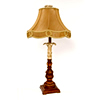 Furniture
Furniture
Your overseas crew will paper-pad wrap and shrink wrap large, upholstered items for moving. Talk to your moving company beforehand about any leather items. Table corners can be protected with cardboard. You may want to consider packing couch pillows in large moving boxes.
Audio Equipment
Special preparation is required to move CD players, DVD players, and record turntables. When moving CD and DVD players, secure the laser with the transport screws located on the bottom or back of the unit.
*Tip
Pack remote controls in the boxes containing the related equipment, or perhaps pack them all in a separate, clearly labeled box.
Speakers
Pack speakers in well-cushioned dish packs. Any large or unusually heavy speakers will simply be pad wrapped and loaded into the container. Servicing is usually not required prior to packing for tape deck, receiver or speakers.
Television
Some large televisions will need to be crated prior to moving day. Let your moving company know if you have a big screen or plasma television. Call your local cable company to cancel service before moving. If you have a converter box, return the box and keep the receipt for future reference.
DVD or VCR
No special servicing is required when moving a VCR. When installing at the destination, place on a hard surface, provide appropriate ventilation for openings, and do not set objects on top.
Satellite Dish
Contact a satellite-dish distributorship for the disconnection and disassembly of this sensitive equipment. Depending upon the construction and size of the unit, it may need to be crated, a service which your moving company can provide.
*Tip
Label cords and cables so you’ll know which goes where, and pack them in the same box as the electronic equipment they go with.
Compact Discs, Tapes and Records
Stand compact discs and records on edge while moving, never flat, on a layer of crushed paper. Support at both ends with large, hardcover books or several pieces of cardboard cut to fit. Top with another layer of crushed paper. Identify contents on the outside of the moving box and mark, “FRAGILE.” If records are not in jackets, wrap individually in tissue paper or plastic wrap to protect from scratches. Records are heavy and therefore should be packed in small moving cartons. Cassette tapes should be placed in their cases and wrapped individually in crumpled paper. Place individual tapes either vertically or horizontally on a couple of layers of crushed paper.
Photographs
Family photographs, videos, slides, and negatives should be packed in separate cartons rather than being combined with other household items. (Note: watch these when moving to very hot or humid climates by making sure the storage area protects items from the elements.) Protect framed photos with padding and cushioning, standing them on edge in a carton. Label moving cartons for easy identification. If possible, carry irreplaceable items with you when you move.
Silk or Artificial Flowers
Arrangements of artificial flowers should be packed in separate moving cartons. Wrap carefully in plastic wrap, tissue paper, or paper towels. If possible, fasten the base to the bottom of the moving carton to prevent shifting. Label the carton “FRAGILE – THIS SIDE UP.”
Lamp Bases
After removing the light bulb and lamp harp (the frame that holds the bulb), wrap the base, harp, and bulb separately in newsprint. Place them together in a moving carton, filling voids with wadded paper.
Lamp Shades
Never wrap lampshades in newspaper, as the ink will soil the shade. Instead, carefully wrap each shade in three or four sheets of tissue paper, a pillowcase or a large, light towel. Use a sturdy moving carton at least two inches bigger all around than the largest shade. Line it with clean paper, using crushed paper under the lamp shade to create a protective layer, but not around the shade. A smaller shade may be nested inside a larger one, provided they do not touch. Only one silk shade should be placed in a carton to avoid stretching the silk. Do not pack other items with shades.
Label moving cartons “LAMP SHADES – FRAGILE – TOP LOAD ONLY”
Chandeliers and Leaded Glass Shades
It is best to have your mover crate large leaded or other glass lampshades or chandeliers. For Glass Table Tops, Marble Slabs, Large Mirrors, Paintings, Statues & Large Vases; It’s best to consult with your moving company about custom-made cartons and crates for items of this kind. Paper should never be permitted to touch the surface of an oil painting.
TV Stand/ Stereo Cabinet
Remove glass doors and pack in a mirror moving carton.
Piano
A qualified service provider should take care of the preparations for moving a grand or baby grand piano. Upright (spinet, console, studio) pianos usually do not require preparation in advance. All pianos will be pad-wrapped to protect the surface. Plan to have your piano tuned at your new home.
Pool Table
Disassembly and crating of your pool table should be done by a third-party service. Crating is a must for slate. You will need to make arrangements at destination to have the pool table uncrated, reassembled, and leveled.
Dining Room
 The dining room will generally include your most fragile china and crystal stemware. Moving professionals recommend that each item should be carefully wrapped in paper and placed in dish-pack moving cartons. You will also want to include any items with values exceeding $100 per pound on your “High Value Inventory” form to receive proper valuation coverage.
The dining room will generally include your most fragile china and crystal stemware. Moving professionals recommend that each item should be carefully wrapped in paper and placed in dish-pack moving cartons. You will also want to include any items with values exceeding $100 per pound on your “High Value Inventory” form to receive proper valuation coverage.
Very Fragile Items
Consult with your Relocation Director on the packing of exceptionally fragile items. Items with values exceeding $100 per pound need to be listed on your “High Value Inventory” form to receive proper valuation coverage. If an item is extremely valuable as well as delicate, it might be wise to have it packed for you. Special materials might be needed for maximum protection while moving.
Table Leaves
Table leaves are best transported in paper pads, then taped to hold the padding in place while moving. (Note: never place tape on the surface of wood.) Don’t use plastic wrap, as moisture may get trapped and damage the wood.
Kitchen/Laundry Room
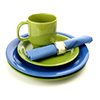 Once you know you’re moving, you can begin packing your kitchen almost immediately. Start with your less-used serving dishes, seasonal items, and small appliances. Next, tackle your large serving bowls, tablecloths, and specialty pots and pans. Keep your everyday dishes for the last week before moving. You may even want to consider buying some disposable plates, cups, and utensils for those last few nights when everything is packed away.
Once you know you’re moving, you can begin packing your kitchen almost immediately. Start with your less-used serving dishes, seasonal items, and small appliances. Next, tackle your large serving bowls, tablecloths, and specialty pots and pans. Keep your everyday dishes for the last week before moving. You may even want to consider buying some disposable plates, cups, and utensils for those last few nights when everything is packed away.
Food Items
Use or dispose of all perishables before moving. You will also need to get rid of cleaning products and other kitchen chemicals. Boxed or canned goods should be packed in small boxes. Dispose of any open packages and wrap glass jars to prevent breakage during moving.Don’t risk moving food products during the summer. The inside of the overseas container can reach 155 degrees.
China & Glassware
Wrap all pieces of china and glassware individually for moving. Using several sheets of clean paper, start from the corner, wrapping diagonally and continuously tucking in overlapping edges. A double layer of newsprint serves well as outer wrapping. A generous amount of paper padding and cushioning is required for all china and glassware.
Label moving cartons with room, contents and “FRAGILE – THIS SIDE UP”
Flat China & Flat Glassware
Larger china and glass plates, platters and other flat pieces are excellent as the lowest layer in a dish pack. Place cushioning material in the bottom of a moving carton. Wrap each piece individually with clean paper, then wrap up to three in a bundle with a double layer of newsprint. Place these bundled items in the moving carton in a row on the edge. Surround each bundle with crushed paper, being careful to leave no voids or unfilled spaces. Add two or three inches of wadded paper on top of the bundle to protect rims and make a level base for the next tier. Horizontal cardboard dividers can be helpful in keeping layers level.. Smaller plates, saucers and shallow bowls could make up a second layer. Wrap and pack in the same way as larger items. You can make cardboard dividers to use between layers by cutting up small book cartons.
Bowls and Odd-shaped Items
Depending on their weight, these might be used for either the bottom or middle layers. Wrap the same way as flat plates.Stand shallow bowls (soup plates, etc.) on edge in the moving carton and deeper ones (such as mixing bowls) nested two or three together, upside down on their rims. Wrap sugar-bowl lids in newsprint, turning them upside down on top of bowls. Then wrap both together in newsprint, followed by a double outer layer. Wrap sugar bowls, cream pitchers, sauce containers, gravy boats, and similar pieces in newsprint and then a double outer wrapping. Place all upright in the moving carton, then top off the layer with wadded newsprint.
Pots & Pans
Pots, pans, and similar items should be wrapped and packed in medium-size moving cartons. Depending on their weight, these might be used for either the bottom or middle layers.
Cups
Even when using a dish pack and cellular dividers, wrap china cups individually first, protecting handles with an extra layer of clean paper. Then, pack cups upside down. If not using cellular dividers, wrap cups individually first in a double layer of paper and place them upside down on rims in a row on an upper layer with all handles facing the same direction. Top off the layer with wadded newsprint.
Silver & Flatware
To protect silver pieces from tarnishing during moving, they should be completely enclosed in newsprint or plastic wrap. Hollow ware — including bowls, tea sets, and serving dishes — should be wrapped carefully like fragile items and packed like china. Loose flatware may be wrapped individually or in sets, and in paper, clear plastic bags, or small gift boxes that are then secured with tape. Even if silverware is in a chest, consider wrapping the pieces individually and repositioning them in the chest. Or fill all voids in the chest with newsprint to prevent shifting while moving. The chest can be wrapped in a large bath towel.
Figurines and Other Delicate Items
Be sure the items are well protected with plenty of cushioning. Wrap first in tissue paper, paper towels, or facial tissue. Then wrap carefully in paper that has been wadded and flattened out. Small mirrors, plaques, and pictures should be wrapped individually in tissue paper with an outer layer of unprinted newsprint. A bath towel or small blanket makes an excellent outer wrapping and padding for glass. Place items on edge in a moving carton.
Small Appliances
Items such as clocks, small radios and other small appliances should be wrapped individually and packed in a moving carton cushioned with crushed paper. If their cords disconnect, wrap them in plastic and secure them to the appliance they belong to. Make sure cords are wrapped so as not to scratch or damage items while moving. Steam irons should be emptied of all water, wrapped and placed in the cushioned bottom of a box.
*Tip
Pack your glass coffee pot, microwave carousel tray, and ceramic crock pot liner with your other glass/fragile items.You can make cardboard dividers to use between layers by cutting up small book cartons.
Cookbooks
Pack cookbooks of the same general size together, in small book cartons. Pack books either flat, or with the spine touching the bottom of the carton. Do not pack with spine facing upward, as glue can break away from the binder. Expensively bound volumes or those of sentimental value should be individually wrapped before packing.
Moving Appliances
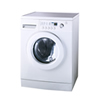 When preparing large appliances for moving, it is important that they be clean and dry to avoid the build up of mildew and mold. Grease left on a stovetop will catch dust and dirt in your shipment, and leave spots on anything it touches. Dry out refrigerators and freezers before moving, especially those with an icemaker. Don’t Forget. Remember to turn off or unplug any appliance before preparing, cleaning, or servicing.
When preparing large appliances for moving, it is important that they be clean and dry to avoid the build up of mildew and mold. Grease left on a stovetop will catch dust and dirt in your shipment, and leave spots on anything it touches. Dry out refrigerators and freezers before moving, especially those with an icemaker. Don’t Forget. Remember to turn off or unplug any appliance before preparing, cleaning, or servicing.
Dishwasher
Clean and dry thoroughly. Disconnect and drain hoses. Leave the door open for a few days prior to moving. Wrap dry hoses in towels and packing paper and place inside the dishwasher.
Protect your appliance from freezing by thoroughly draining and then wiping up any excess water.
Washing Machine
Clean and dry thoroughly. Disconnect and drain hoses. Wrap metal connector ends of hoses in a towel and place inside washer before moving. Secure the tub following the manufacturer’s guidelines to prevent swaying. Note: If you don’t have the manufacturer’s guidelines, you can purchase a washer kit with a manual that provides instructions on how to secure the tub by tightening down the tub using screws. If you prefer not to do it yourself, there are many third party service providers. Upon arrival to your new home, have the washer installed by a qualified installer.
Clothes Dryer
Before cleaning, unplug or turn off the dryer from electrical power. Clean the lint screen. Prior to plugging in your electric dryer at your new residence, have your power supply checked for the correct electrical requirements. If you are moving a gas dryer, the appliance should be disconnected and the gas line capped off prior to moving by a qualified technician. The driver and the movers are not qualified to perform this service. You will need to make third party arrangements.
Stove Top/Range/Oven
Clean thoroughly. Detach all removable parts and pack safely in a box, clearly marked with the contents. If you are moving a gas range, it must be disconnected prior to moving by a qualified service technician. The gas line must be properly secured also. If you have an electric range, generally no servicing at your present residence is required. When arriving at your new residence with your gas range, you will need a qualified gas installer to check your gas supply, connect the gas line, seal any openings, light the pilot, and handle any other hook-up requirements.
A Great Idea.
There are products designed to keep your refrigerator clean, dry, and mildew free while moving; check at a hardware or grocery store.
Refrigerator
Dispose of all perishables. Unplug the power cord, wash all removable parts, and dry thoroughly. Allow the parts including the interior of the refrigerator and freezer, to dry thoroughly prior to moving to allow all moisture to evaporate. Pack all loose parts including bins and shelves in a secured, approved container for moving. Vacuum the condenser or compressor. Empty and clean the evaporator pan; allow time for it to dry. Before moving, turn off the water and disconnect the water line if you have a cold water dispenser or automatic icemaker.
A Great Idea
At the destination, allow 24 hours before operating. This will allow time for the oil to settle, preventing damage to the compressor. The water reservoir should also be emptied. If your refrigerator or freezer is an older model, you may have to have the compressor or motor bolted down while moving. Have icemaker and water dispenser connected to water line by a professional. Copper tubing, a shut off valve and fittings may be required.
Move Tip
Once your icemaker is in service, dispose of the first few batches of ice to clear out any impurities from the water line.
Microwave Oven
Glass trays should be removed, wrapped, and securely packed in a moving carton. The microwave can be placed in its original box, if available and still in good shape, or in a well-cushioned moving carton. If your microwave is large, ask your moving company if it can be pad-wrapped on moving day. Do not place cardboard in the door opening because it can spring the door during transit. Take care not to block the exhaust vent when installing it at your new home.

